


ARIZONA
April 2001

1 of 2


ARIZONA
April 2001


1 of 2
All text copyright © Eitan Grunwald. All photographs copyright © Eitan or Ron Grunwald
except photographs by others are copyright per photo credits. All rights reserved. Terms
When my brother Ron and I went to California in March 2001 we volunteered to get bumped from our flight
and scored some free airline tickets. A month later we headed back to the west, this time for a weekend in Arizona
near Phoenix.
Most satisfying find: our first. A Mojave Rattlesnake on the side of the road . . . being shot at repeatedly by a
man with a pistol. We jump out of the car and tactfully ask "Mind if we have it?", appealing to his generosity rather
than yelling "Stop it, you idiot!" (not a recommended salutation for guys firing guns). Grateful for his willingness to
share, and for his poor aim, we rescue the snake from the hazards of the road and armed civilians.
We even use it as an opportunity to educate. As the snake keeps trying to escape without attempting to strike,
we point out that all it wants is to be left alone, and will not hurt anyone if left alone in return, a sentiment our back-
country individualist seems to understand. He returns the gun to his car and brings out a camera instead. In the end
everyone gets away unharmed.
We proceed down the dirt road till we come to an abandoned mine. Flip a piece of tar paper at the entrance.
Something big explodes from underneath and practically runs up Ron’s leg, making its way for the nearest crack (in
the rocks). Grab it before it goes in too deeply, and after a few minutes of gentle insistence we emerge with our first-
ever Chuckwalla.
These lizards usually bask on boulder piles and dive immediately into the rocks as soon as danger approaches.
Notice how this guy inflates when being held. Such defensive behavior makes Chuckwallas practically unremovable
when wedged into tight crevices. Also note the red back rather than the more typical color phase of an all black body
and dull yellow tail.
The desert is in bloom so we wander about admiring the flowers and searching for snakes. We were told by
more than one person to look for Rattlesnakes at the base of bushes or rock ledges. “Don’t expect to be walking along
and suddenly hear a rattle,” they said. “You’ll have to look long and hard if you expect to find anything.”
So, naturally, as I’m walking along I hear from behind me a single Chh-Chh from a nearby bush. At first I don’t
pay it much attention. It’s quiet, almost unnoticeable, and sounds like some insect, or the momentary rustle of dry
leaves. Then I hear it again, so I turn around to investigate. Get real close, lean over the bush, and there hidden
beneath the branches is a young Western Diamondback Rattlesnake.
Another one who finds us. I’m walking along the edge of a wash when suddenly I hear a really loud Chh-Chh-
Chh-Chh!!! from below and to the right, and there's this adult WDB backing up into a bush.
Most unusual find: Ron is checking out a ridge where talus meets outcropping, when suddenly he hears a slight
thud next to him, followed by a tiny little bzzz. He looks down, and sees a juvey Speckled rattler, which has just
dropped from a palo verde tree and landed at his feet! It crawls beneath a ledge, but Ron manages to coax him out
and carry him down for photos.
Coachwhip. Yeah, he bit. Actually, I have no problem tailing him; he’s stretched out on the road and,
surprisingly, not moving very fast. Grab him behind the head after the old pull-'em-through-the-pants-legs routine
(below the knees!). Want to get a better picture of his head, so I let go for the photo. He holds still long enough to take
a few pics, then turns and catches me right on the ball of my thumb. From this diagnostic we confirm species
identification: they’re not nicknamed “Nasty-cophis” for nothing.

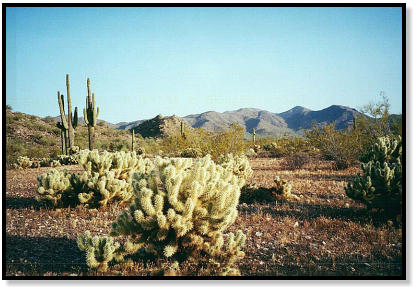
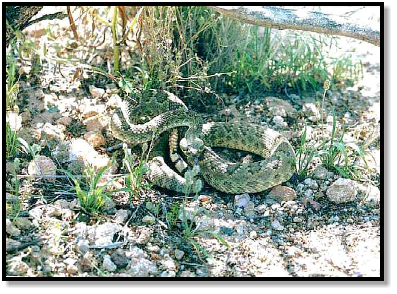

Mojave Rattlesnake
Crotalus scutulatus
Chuckwalla
Sauromalus obesus
Common Name
Scientific name
Western Diamondback Rattlesnake
Crotalus atrox
Common Name
Scientific name
Speckled Rattlesnake
Crotalus mitchellii
Common Name
Scientific name
Common Name
Scientific name
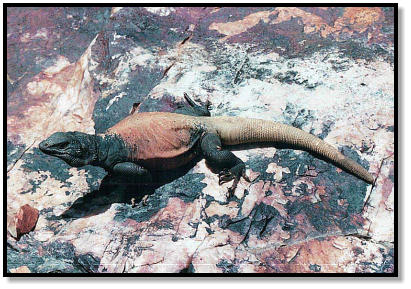
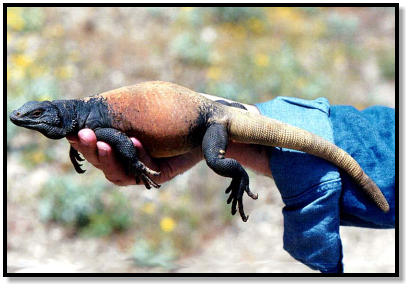
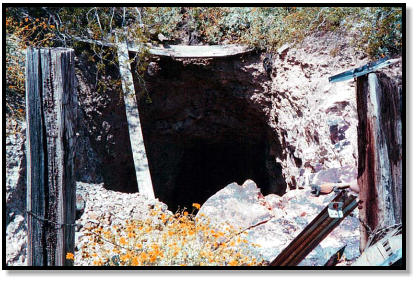

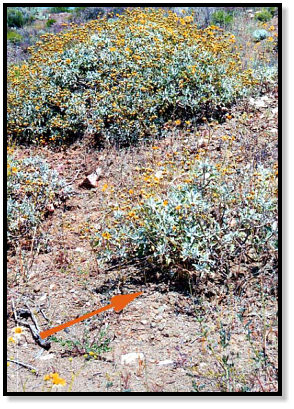
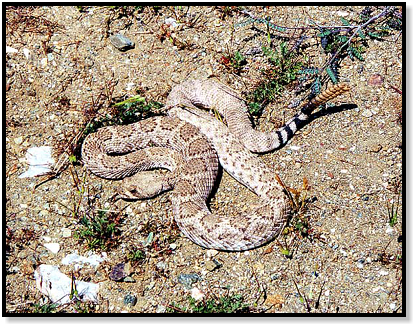

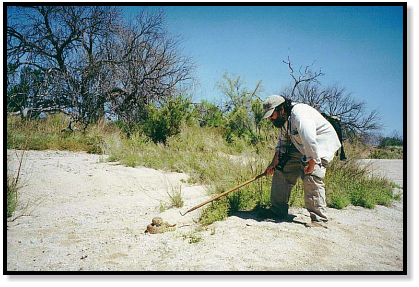

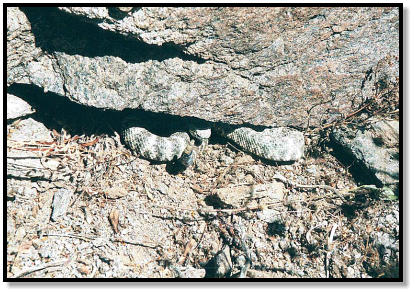
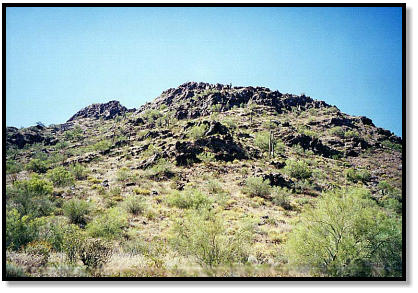

Red Coachwhip
Coluber flagellum piceus






